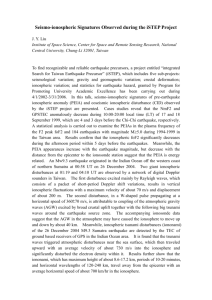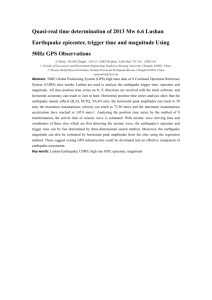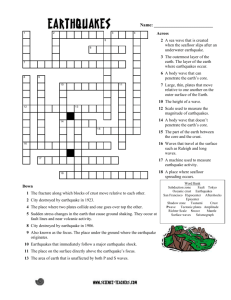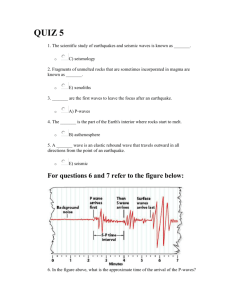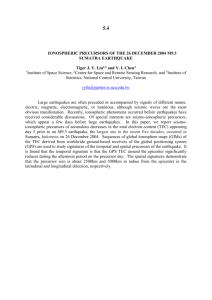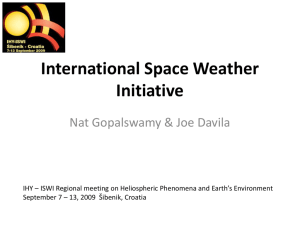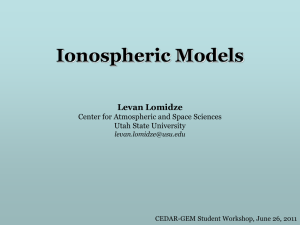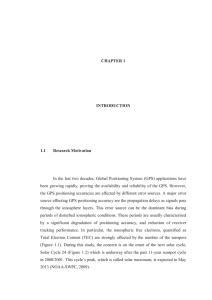ionospheric perturbation by the surface wave of the 2003 tokachi
advertisement
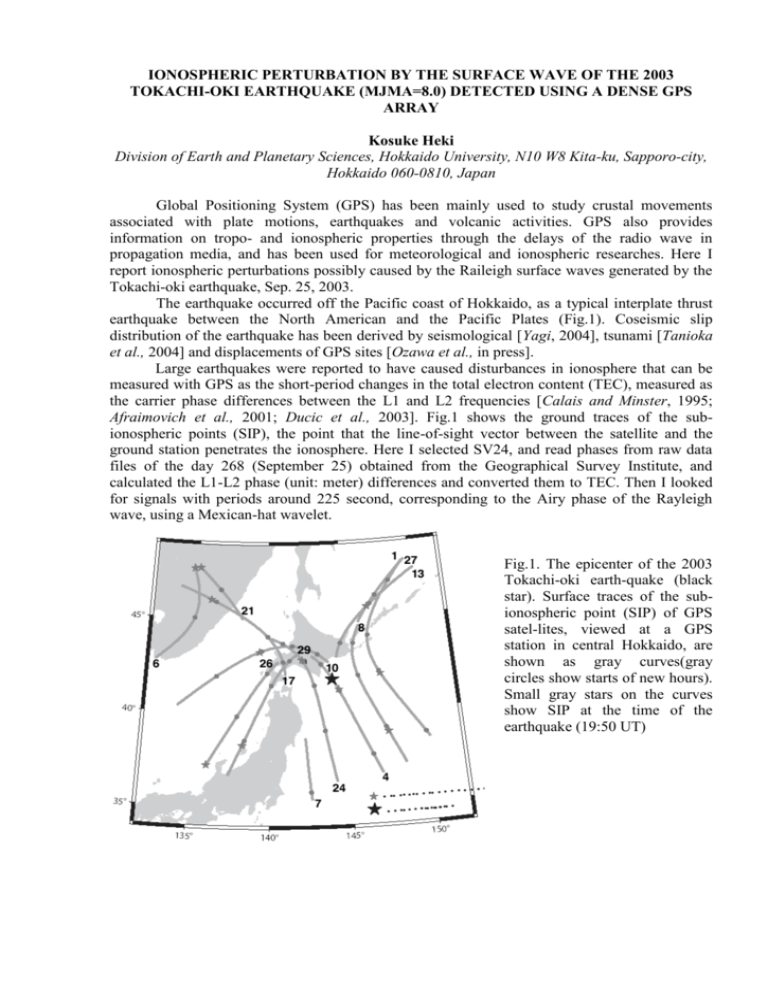
IONOSPHERIC PERTURBATION BY THE SURFACE WAVE OF THE 2003 TOKACHI-OKI EARTHQUAKE (MJMA=8.0) DETECTED USING A DENSE GPS ARRAY Kosuke Heki Division of Earth and Planetary Sciences, Hokkaido University, N10 W8 Kita-ku, Sapporo-city, Hokkaido 060-0810, Japan Global Positioning System (GPS) has been mainly used to study crustal movements associated with plate motions, earthquakes and volcanic activities. GPS also provides information on tropo- and ionospheric properties through the delays of the radio wave in propagation media, and has been used for meteorological and ionospheric researches. Here I report ionospheric perturbations possibly caused by the Raileigh surface waves generated by the Tokachi-oki earthquake, Sep. 25, 2003. The earthquake occurred off the Pacific coast of Hokkaido, as a typical interplate thrust earthquake between the North American and the Pacific Plates (Fig.1). Coseismic slip distribution of the earthquake has been derived by seismological [Yagi, 2004], tsunami [Tanioka et al., 2004] and displacements of GPS sites [Ozawa et al., in press]. Large earthquakes were reported to have caused disturbances in ionosphere that can be measured with GPS as the short-period changes in the total electron content (TEC), measured as the carrier phase differences between the L1 and L2 frequencies [Calais and Minster, 1995; Afraimovich et al., 2001; Ducic et al., 2003]. Fig.1 shows the ground traces of the subionospheric points (SIP), the point that the line-of-sight vector between the satellite and the ground station penetrates the ionosphere. Here I selected SV24, and read phases from raw data files of the day 268 (September 25) obtained from the Geographical Survey Institute, and calculated the L1-L2 phase (unit: meter) differences and converted them to TEC. Then I looked for signals with periods around 225 second, corresponding to the Airy phase of the Rayleigh wave, using a Mexican-hat wavelet. Fig.1. The epicenter of the 2003 Tokachi-oki earth-quake (black star). Surface traces of the subionospheric point (SIP) of GPS satel-lites, viewed at a GPS station in central Hokkaido, are shown as gray curves(gray circles show starts of new hours). Small gray stars on the curves show SIP at the time of the earthquake (19:50 UT) In Fig.2 are seen clear ionospheric disturbances ~13 minutes after the earthquake (time required for the acoustic wave to travel from the ground to ionosphere ~300 km high), which seems to propagate with the velocity of the Rayleigh wave (~ 3 km/sec). In this study I also discuss comparisons between signals of satellites over the land and oceanic area, and address the possibility of detecting tsunami signals in the ionosphere. Fig.2. Components with a 225 second period in the L1-L2 phase differences of SV24 from 19.5 to 21.0 UT of the day 268 (September 25) at ~150 GPS stations, isolated by wavelet analyses. The vertical axis shows the distance between the epicenter and the SIP at the time of the wave arrival. Ionospheric dis-turbances are seen to arrive ~13 minutes after the main- shock with amplitudes of a few times 0.01 TEC Unit (1 TECUnit = 1016 el./m2), and to travel with a group velocity similar to the Rayleigh wave. References 1. 2. 3. 4. 5. 6. Afraimovich, E.L.et al., Ann. Geophy., 19, 395-409, 2001. Calais, E. and J. B. Minster, Geophys. Res. Lett., 22, 1045-1048, 1995. Ducic, V., ,et al., Geophys. Res. Lett., 30, doi:10.1029/2003GL017812, 2003. Ozawa, S., et al., Earth Planets Space, in press. Tanioka, Y. et al., Earth Planets Space, 56, 373-376, 2004. Yagi, Y., Planets Space, 56, 311-316, 2004.
